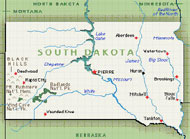| 4.0 | COMMERCIAL VEHICLE OPERATIONS |
| 4.1 | COMMERCIAL VEHICLE ELECTRONIC CLEARANCE |
| 4.1.0 | ITS shall include a Commercial Vehicle Electronic Clearance (CVEC) capability. |
| 4.1.1 | CVEC shall include a Fixed Facility consisting of those structures and equipment to include Ports Of Entry, Inspection Stations, Weigh Stations and Toll Booths. |
| 4.1.1.4 | Fixed Facility shall include processing to issue pull-in for safety inspection signals of the following type: |
| 4.1.1.7 | Fixed Facility shall provide the capability to establish two-way communications with each vehicle approaching the facility. |
| 4.1.2 | CVEC shall include a Vehicle System capability |
| 4.1.2.2 | Vehicle System shall provide the capability for each vehicle to establish two-way communications with fixed facilities. |
| 4.1.2.3 | Vehicle System shall provide the capability for each individual vehicle's or carrier's participation in the process to be on a voluntary basis. |
| 4.2 | AUTOMATED ROADSIDE SAFETY INSPECTION |
| 4.2.0 | ITS shall include an Automated Roadside Safety Inspection (ARSI) capability. |
| 4.2.2 | The ARSI capability shall include a Vehicle System (VS) function. |
| 4.2.2.2 | The VS architecture shall provide the capability to be developed and integrated as a phased implementation. |
| 4.2.2.5 | The VS shall include an on-board safety status monitoring system that is accessible from the roadside. |
| 4.3 | ON-BOARD SAFETY MONITORING |
| 4.3.0 | ITS shall include an On-Board Safety Monitoring (OBSM) function, that provides monitoring and warnings of safety problems. Of primary importance is to inform the driver, as soon as possible, of any problem that has been detected. Of secondary importance is notifying the carrier of detected safety problems. Last in importance is the notification of appropriate enforcement agencies. Requirements for On-Board Safety Monitoring are given below: |
| 4.3.1 | OBSM shall include a Fixed Facility (FF) capability for the analysis and control of safety information. |
| 4.3.1.2 | The FF shall provide the capability to provide warnings of any safety problem that has been identified. |
| 4.3.1.7 | The FF shall provide the capability to have two-way data exchange between the Roadside facility and each vehicle. |
| | |












